All products featured are independently chosen by us. However, SoundGuys may receive a commission on orders placed through its retail links. See our ethics statement.
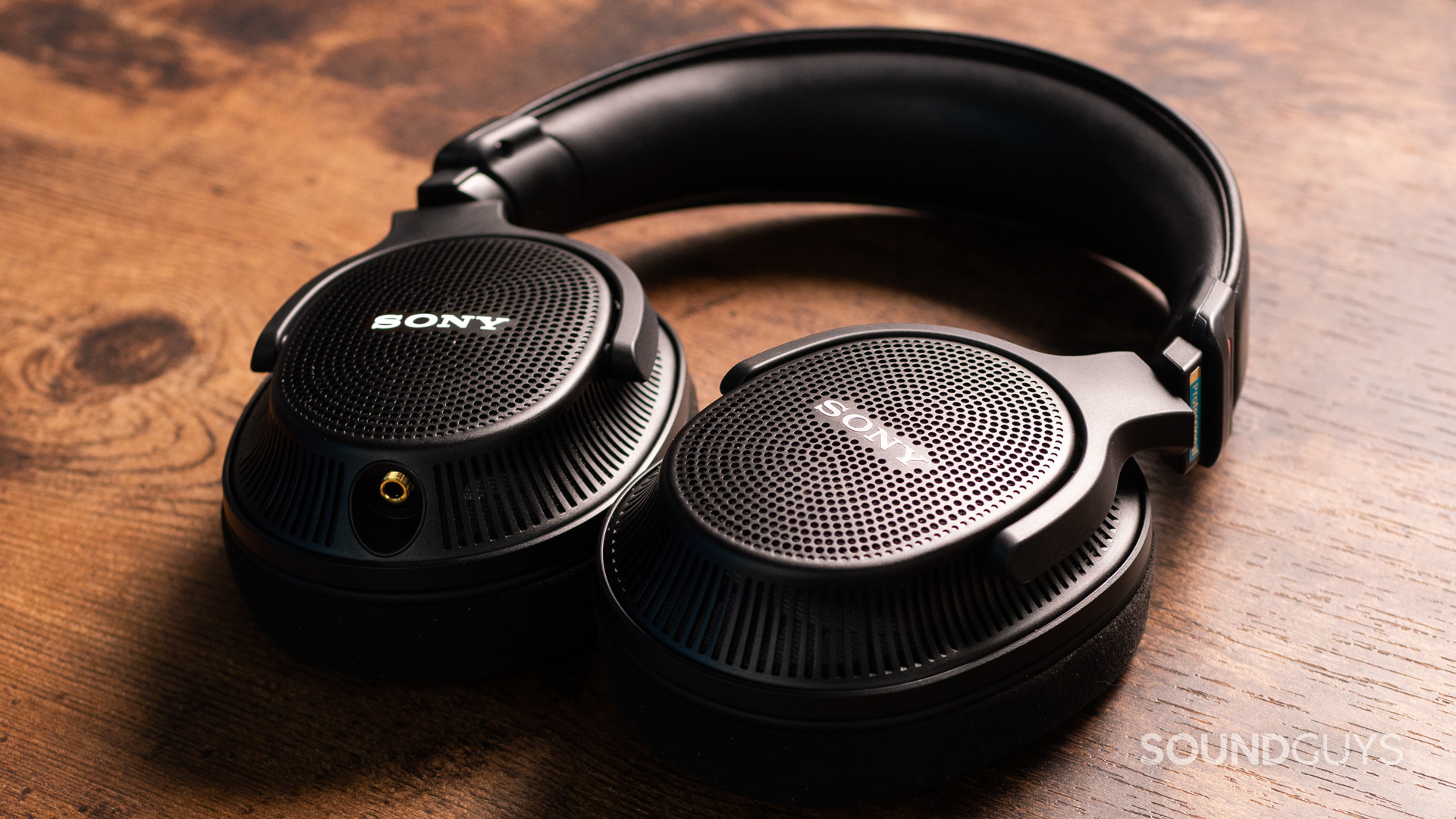
Sony MDR-MV1 review
April 11, 2025
Sony MDR-MV1
Picking the right equipment for a home studio is a task in itself because there are many choices to make. Grabbing the wrong monitors can affect your mix if you’re not keenly aware of how they perform, so it’s essential to pick the right ones. Are the Sony MDR-MV1 the right choice? Let’s find out.
- This article was updated on April 11, 2025, to update formatting, check recency.
- This article was published on April 9, 2024.
The Sony MDR-MV1 is for content creators who are looking to step up their monitoring game, but prefer headphones to studio monitors.
What’s it like to use Sony MDR-MV1?
The Sony MDR-MV1 is a set of open-backed studio headphones primarily constructed from lightweight plastic and aluminum. Though plastic construction can sometimes give the impression that the headphones are cheap, the Sony MDR-MV1 are anything but. However, that light plastic has a significant positive: a lower overall weight, allowing longer listening sessions.
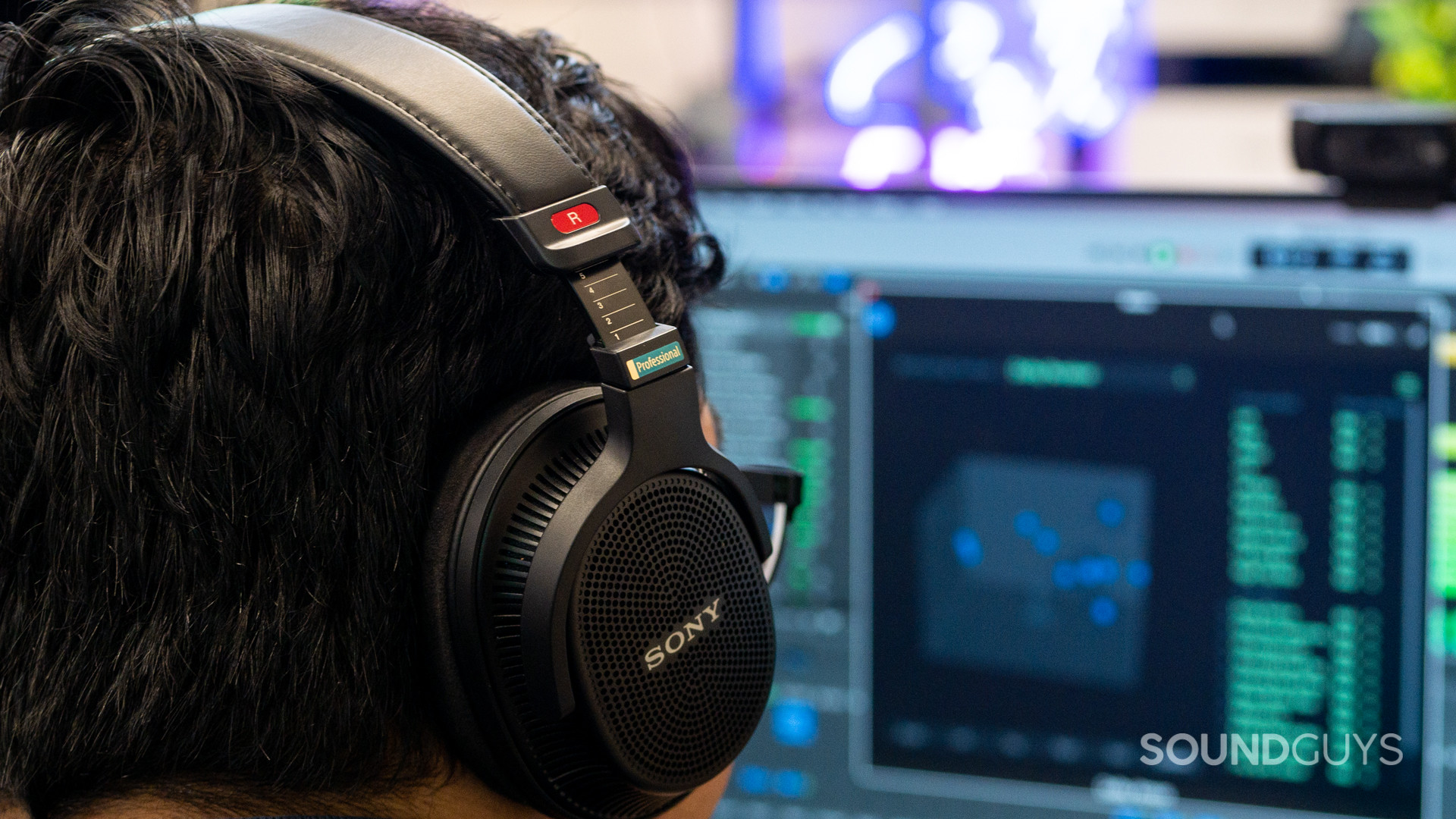
Considering the size of the Sony MDR-MV1, that’s a good move. With very deep and wide ear cups, the material needed to house the drivers and band would add up quickly if something heavier were chosen. For extended sessions, the light weight meant I had no discomfort wearing the headphones for many hours.
Sony is clearly playing up their history in the recording industry, as these headphones borrow a lot of design cues from the Sony MDR-V6 family of monitors. From the shape to the color scheme to the decals on the sides of the band, you can see precisely the nostalgia the company is aiming for.
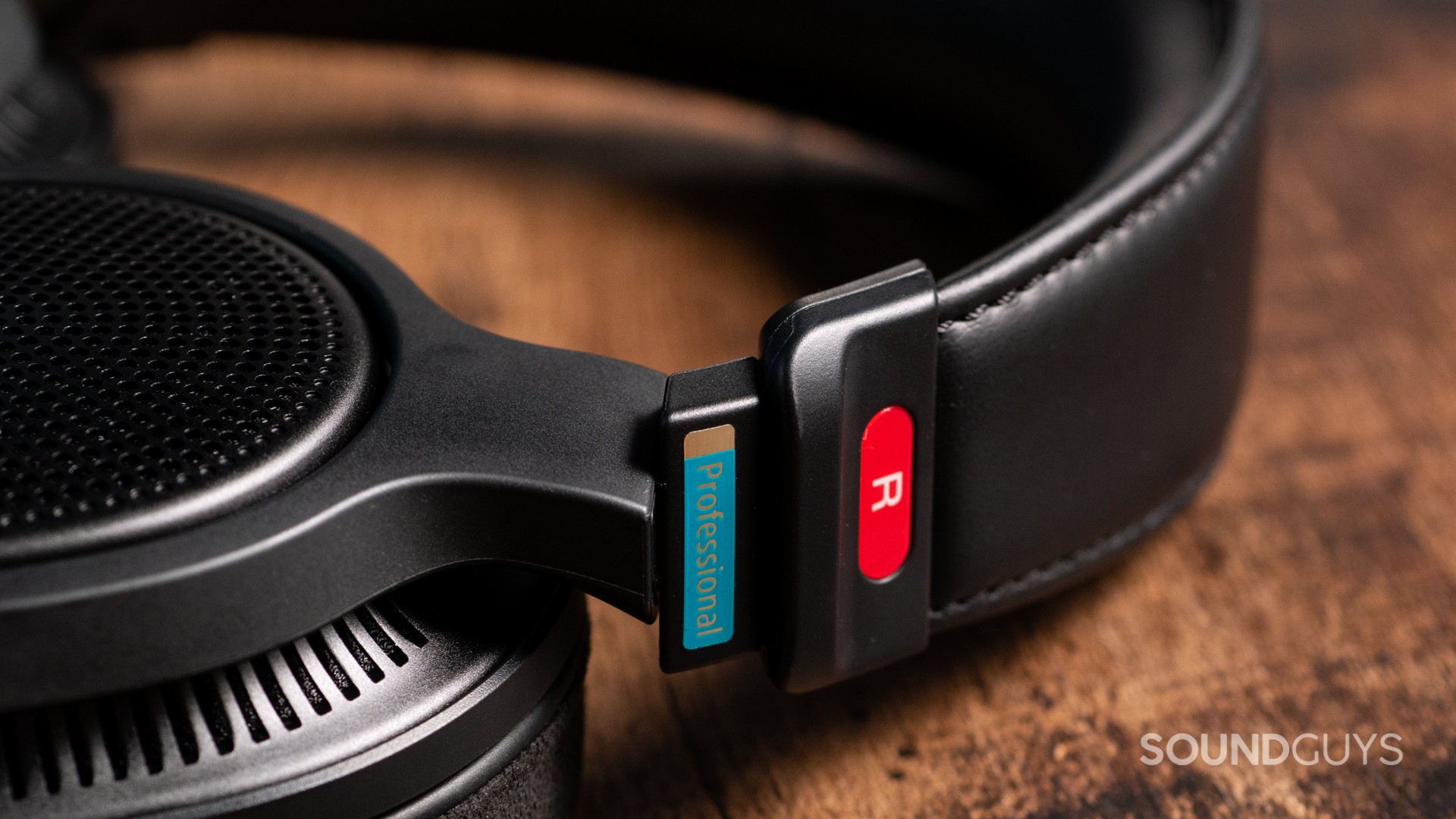
Because these headphones are open-backed, we caution anyone hoping to use these outdoors against doing so; an open back means no IP rating. The headphones will be a bit more fragile than their forebears despite having a removable cable. So don’t loan these out if there’s a chance of wild behavior or open containers of liquid about.
Should you use the Sony Headphones Connect for the Sony MDR-MV1?
To use the Sony 360 Reality Audio for audio playback, you must use the Sony Headphones Connect app or the Sony 360 Reality Audio plugin for your DAW. This can add several hundred dollars to your purchase if you’re a content creator, so keep in mind that you’re going to need extra cash if you’re hoping to produce content with this standard. If you’re really struggling for cash, you might want to get on the Dolby train instead.
How does the Sony MDR-MV1 connect?
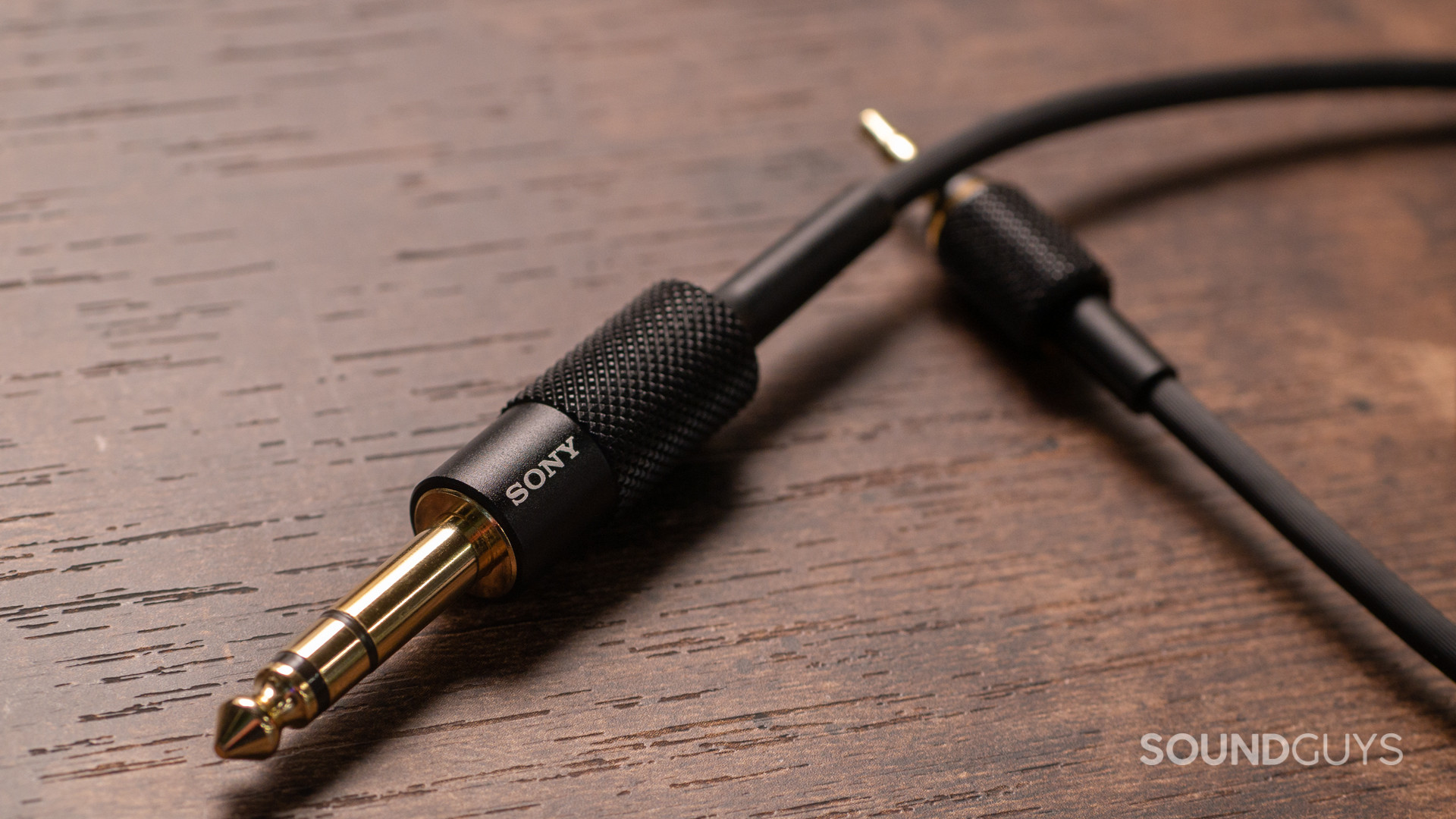
As with many studio-oriented headphones, you connect the Sony MDR-MV1 to your source, amp, or interface with the 6.3mm TRS plug: the larger connector is used by default, and those with a 3.5mm jack can use the included adapter dongle. It could be better, but it works.
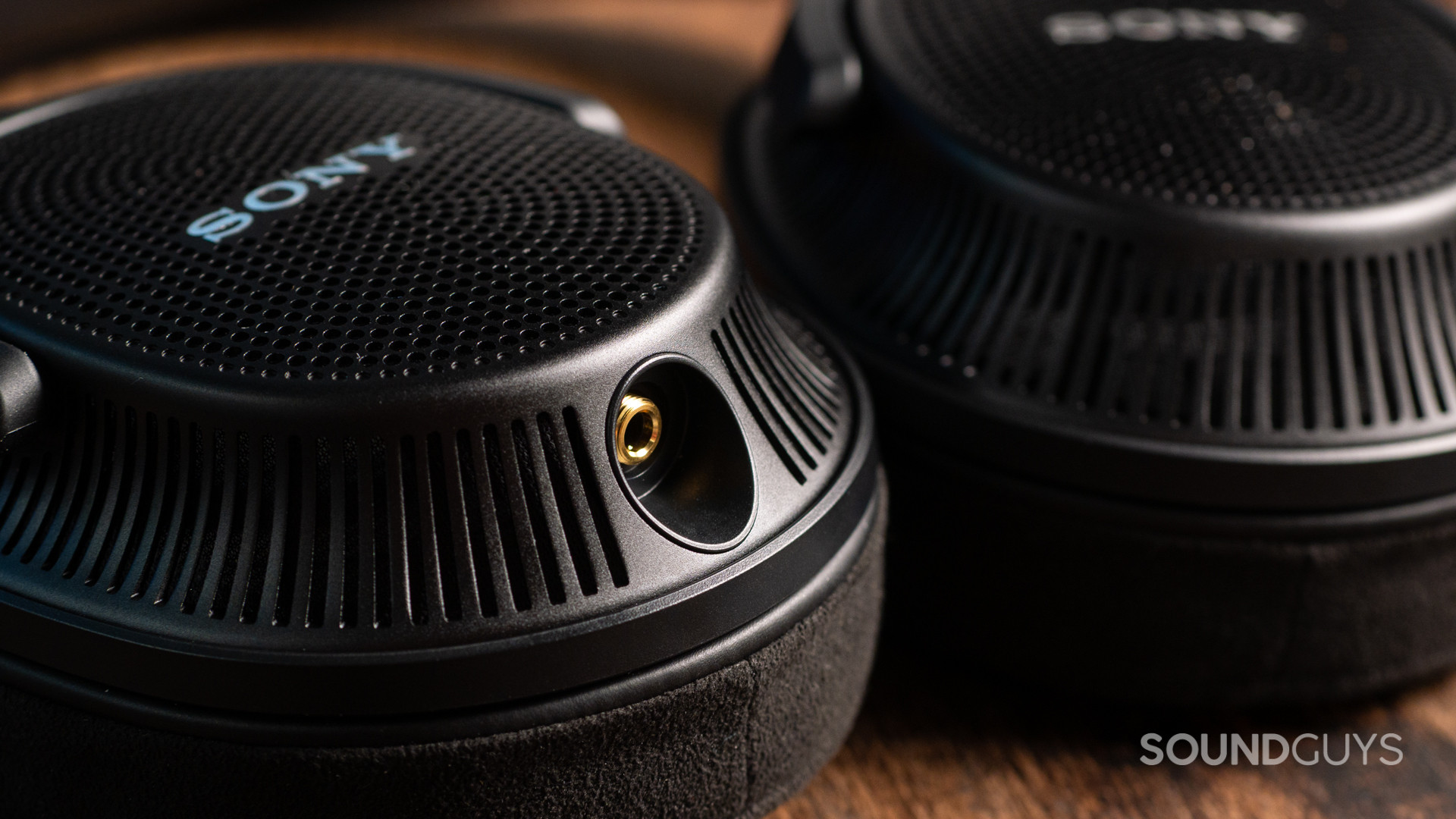
The cable is a pretty beefy affair, with a thick rubber casing that can survive chair wheels and other snags. But you can replace the cable should something break, as it’s detachable. Frustratingly, the cable’s interconnect needs a particular threaded end, which means the only replacements you can get are from Sony themselves or certified resellers. It’s a colossal pain to source one, but that may change.
No. You do not need an amp for this product.
Because the Sony MDR-MV1 has a low impedance of 24Ω and a sensitivity of 100dB/mW, it is doubtful that you’ll need an amplifier. If you do, there’s probably something wrong with your source — or you’re accidentally using a line-out port.
How well do the Sony MDR-MV1 block out noise?
The Sony MDR-MV1 do not attempt to block outside noise, as they’re open-backed headphones. Given that you’ll hopefully be using these cans in a quiet studio, this shouldn’t concern you all that much.
Loading chart ...
You can see that the Sony MDR-MV1 will not isolate you from your surroundings, and only block about half of high-frequency noise. Though that might sound like a lot, trust me, it isn’t. Additionally, anyone sitting next to you can hear what you’re listening to, so the headphones should be kept out of the recording booth. Microphones will pick up some spill if you playback too loudly, so don’t use these for tracking.
How do the Sony MDR-MV1 sound?
Studio monitoring headphones are often used in inappropriate contexts. Still, the Sony MDR-MV1’s main selling point is its ability to assist content creators in producing spatial audio content — rather than for casual music listening.
Multi-Dimensional Audio Quality Scores (MDAQS)
The chart below shows how the sound of the Sony MDR-MV1 was assessed by the Multi-Dimensional Audio Quality Score (MDAQS) algorithm from HEAD acoustics.
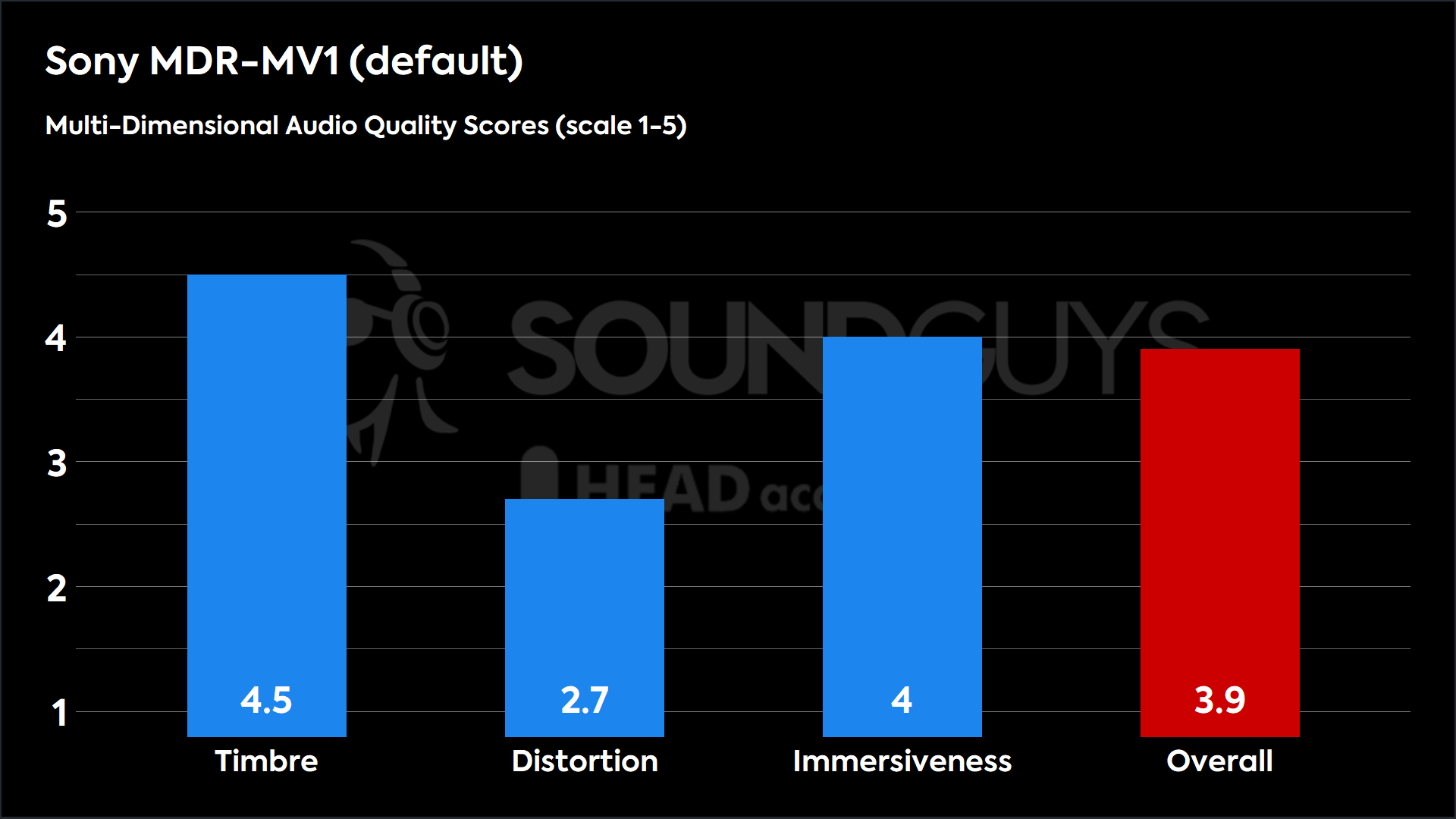
Though the immersiveness score is relatively high (which is good, considering the advertised utility with spatial audio mixing), studio headphones often target a different sound than consumer headphones.
- Timbre (MOS-T) represents how faithfully the earbuds reproduce the frequency spectrum and temporal resolution (timing information).
- Distortion (MOS-D) represents non-linearities and added noise: higher scores mean cleaner reproduction.
- Immersiveness (MOS-I) represents perceived source width and positioning: how well virtual sound sources are defined in three-dimensional space.
Reviewer’s notes
Editor’s note: this review uses a hover-enabled glossary to describe sound quality based on a consensus vocabulary. You can read about it here.
Objective Measurements
This is one of those times where the measurements don’t really do a wonderful job of contextualizing the utility of a set of headphones, unless you’re experienced and know what you’re looking for.
Loading chart ...
Though I’m a little more negative about the Sony MDR-MV1 when it comes to listening as a set of high-end headphones, there’s a lot to like — but it is an odd response. For example, the highs from 5kHz and up are highly pronounced. And where most open-backed headphones have a difficult time with bass, the Sony MDR-MV1 has too much, with a gradually ramping overemphasis from about 800Hz on down.
That bass tilt exceeds what we typically see in open-back headphones considerably. It’s even more pronounced than our Headphone Preference Curve, which is unusual indeed. However, these headphones are a bit of a conundrum when considering the application they’re meant for. It means you’ll find yourself cutting a fair bit when using these headphones for different applications.
Loading chart ...
For content creators, the comparison to the Beyerdynamic DT 990 PRO will happen quite a lot, as its frequency response has some similar features. In this light, Sony wins out on the back with a more consistent performance.
Should you buy the Sony MDR-MV1?

For the person who knows what they’re doing, you could do worse than the Sony MDR-MV1. However, the tuning choices made with these headphones will mean that audiophiles will want to tinker. That’s not a bad thing, but you might be in for a surprise when you hear the headphones straight out of the box. I hesitate to tell people not to buy these cans, but they are geared almost exclusively towards content creators and not casual listeners, so if you’ve read the above, you already know if this fits your life.

If you’re making a lot of immersive spatial content, I can see these headphones serving you quite well. As the world of music changes to adopt more standards, it’s nice to have something that’s up to the task, and the Sony MDR-MV1 does well with spatial audio. However, you might find entry to creating content with the Sony 360 Reality Audio standard a bit cost-prohibitive. At the end of the day, your needs will dictate your purchases, but we recommend maybe shopping around a bit, or looking at other setups before committing to the Sony MDR-MV1.
What should you get instead of the Sony MDR-MV1?
As studio monitor headphones, several established competitors should be on any prospective buyer’s radar. Even though these headphones are unique in their performance, people have been mixing music for years to great results with older headphones. Any of the following competitors might fit your life better.
![Beyerdynamic DT 990 Pro[G] A photo of the Beyerdynamic DT 990 PRO being worn by writer Adam Molina.](https://www.soundguys.com/wp-content/uploads/2017/11/Beyerdynamic-DT-990-ProG.jpg)
For starters, the Beyerdynamic DT 990 PRO $169 at Amazon is a fair bit like the Sony MDR-MV1, just with a lot less bass, and narrower bands of emphasis to help identify annoying sounds. Though the Beyerdynamic headphones don’t cost as much as the Sony MDR-MV1, they do not have a removable cable, even if you can more easily replace any of the pads or components of the cans. As these headphones are much lower in price, the more budget-conscious among you may want to give these a serious look.
If you’re looking for a more traditional set of headphones that can pull double-duty between mixing and casual listening, the Sennheiser HD 600 ($299 at Amazon) is an old favorite for a reason. Super comfortable, with removable cables and a very easy-to-equalize frequency response. Sennheiser also recently released the Sennheiser HD 490 PRO ($399.99 at Amazon) that has a bit more to offer music producers as well. These headphones are about as expensive as the Sony MDR-MV1, so you will want to familiarize yourself with both before buying either. We liked our time with the new Sennheiser headphones more than the Sony MDR-MV1, but your needs will dictate which one is the better buy for you.
Finally, suppose you’re looking for headphones to listen to music with but want a more “studio” sound. In that case, you might want to grab the HiFiMan Sundara ($299 at Amazon) instead, as this set of headphones is not only straightforward to equalize but also sounds great out of the box.
Frequently asked questions
The Sony MDR-MV1 has a limited 1-year warranty to protect against manufacturing defects or failures not related to accidental damage. More terms apply; look around at www.sony.com/support.
No.
The Sony MDR-MV1 has a listed sensitivity of 100 dB/mW.
Yes. The headphones are great for spatial audio and conventional audio formats.